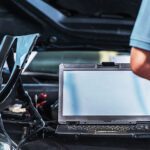EV Charging Connectors are Key to Power and Security
As e-mobility continues to gain acceptance in both consumer and commercial markets, EV charging infrastructure equipped with safe and secure charging connectors provides a critical link between the power grid, vehicles, and payment systems.
The number of electric vehicles (EVs) on the roads is expected to rise dramatically around the world as manufacturers work to meet new emissions requirements in the U.S., Europe, and Asia — and as competition heats up in the EV market. Tesla managed to hit nearly 500,000 deliveries in 2020, and construction is now underway on its Gigafactory near Berlin, which is spurring German automakers to compete with their own electric vehicles. A new crop of EVs from BMW, Volkswagen, Audi, Porsche, and Daimler is in development now. In China, electric car start-ups Nio, Li Auto, and Xpeng are facing off against Tesla’s new Model Y, a China-only EV. The Chinese government has invested heavily in EV technologies and charging infrastructure.
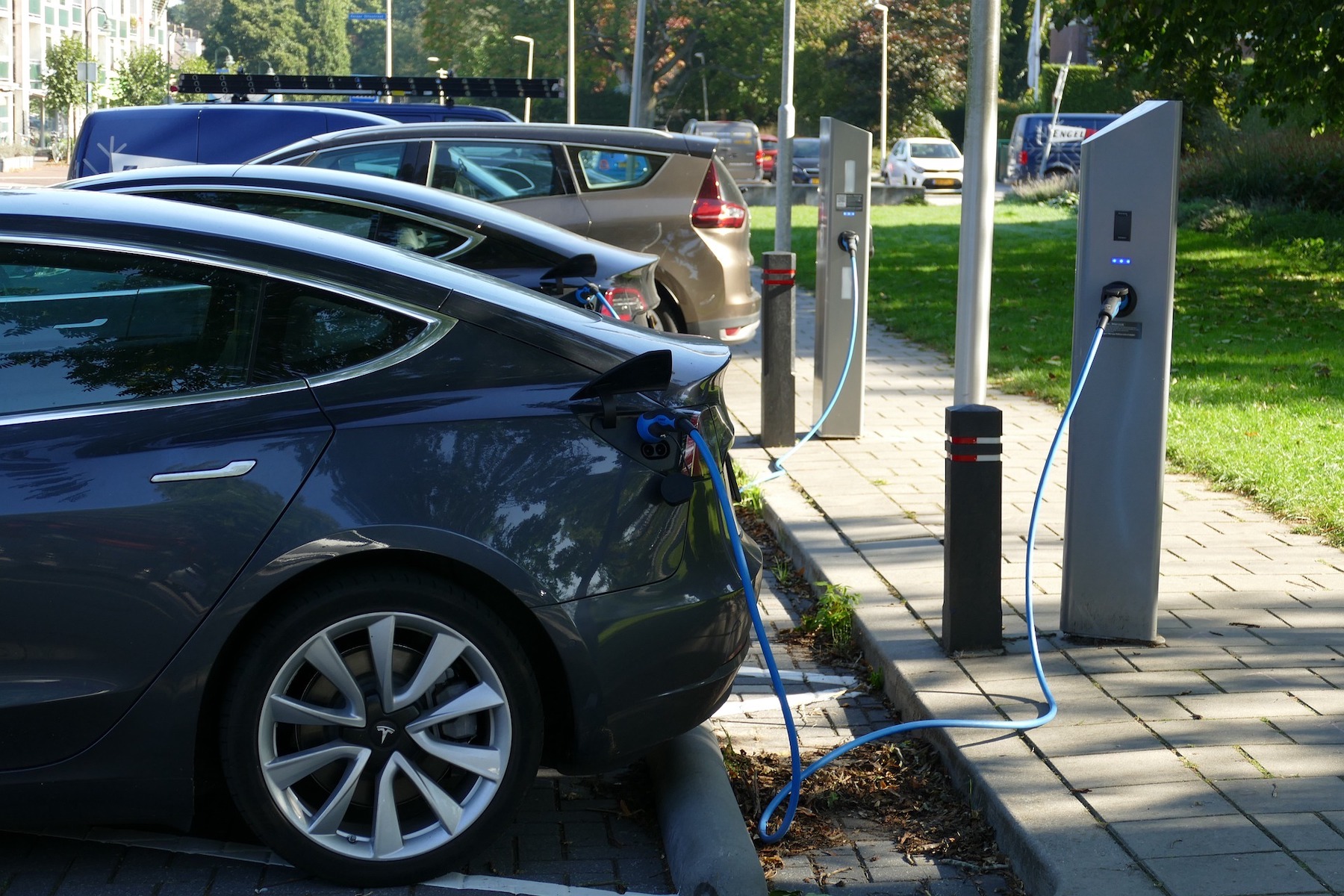
Global EV sales are predicted to grow 50% in 2021, according to Morgan Stanley analysts, and to reach 31% market penetration by 2030. Nearly every major auto manufacturer has announced new electric cars and/or trucks for 2021, and every new EV has to connect to the electrical grid to draw power. This fact is driving the push for greater standardization of the charging connectors and systems used in both homes and public charging stations.
Today’s significant market interest in electric vehicles is driving intense discussions about the role that charging connectors play in protecting the electrical grid, vehicle functionality, and financial transactions from security breaches. Organizations including UL, ISO, and IEC are already working to standardize and meet these goals. Similarly, the Southwest Research Institute is working with the automotive industry to develop cybersecurity initiatives to protect vehicles and embedded systems. In late 2020, a team of researchers successfully reverse-engineered the signals and circuits on an EV and a J1772 charger to disrupt vehicle charging with a spoofing device. “This was an initiative designed to identify potential threats in common charging hardware as we prepare for widespread adoption of electric vehicles in the coming decade,” said Austin Dodson, the engineer who led the research.
Uncovering vulnerabilities in the charging process and developing hardware and software solutions now is critical as the automotive industry prepares for widespread adoption.
In addition to protecting charging processes, safeguarding financial transactions is also key. Today, most EV drivers who charge on the road have to sign up in advance for charging networks in order to access paid chargers. Level 2 and Level 3 chargers require payment, often using membership cards that link charging networks to a financial network capable of processing credit card payments.
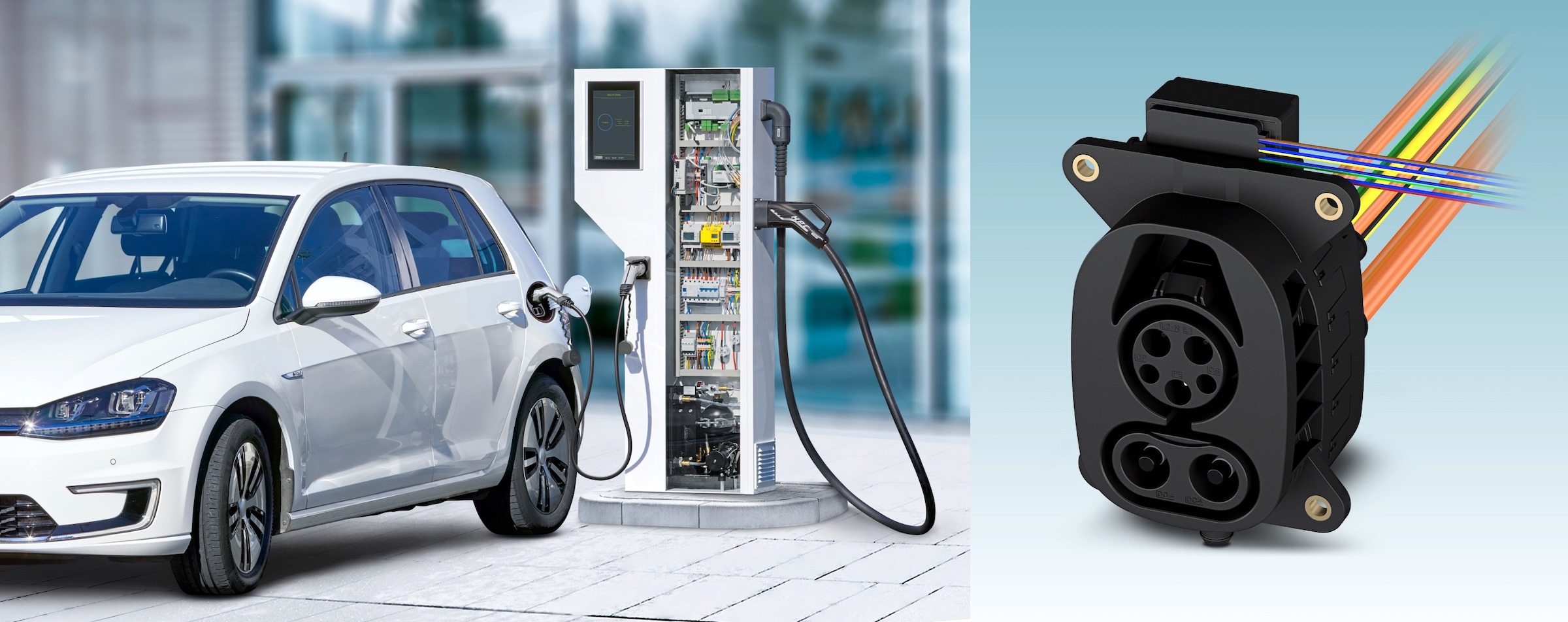
Phoenix Contact’s CHARX portfolio provides connection and communication technologies that enable quick, safe, and convenient AC and DC EV charging.
ISO and IEC started working together a decade ago to recommend standardization of connectors and how they communicate through the electrical charging infrastructure. In 2014, ISO released 15518-2, creating a standard feature that allows drivers to skip the charging network registration and move to a more convenient plug-and-charge system. But until recently, there hasn’t been a lot of progress regarding charging and billing processes. In late 2020, the UK opened its first GRIDSERVE electric vehicle service station, the first of 100 solar-powered stations that offer “tap and charge” payment, charging via multiple connection protocols, and numerous amenities for drivers.
Tesla, the only vehicle maker that set up its own charging network, is also the only manufacturer with a smart connector pair that handles charging the car and billing the owner. This connector pair allows drivers to pull up to a Supercharger and plug in, instantly sharing information that allows the Supercharger to identify the specific car and link to the financial system for contactless payment. The intelligence embedded in Tesla’s proprietary connector configuration allows Tesla to set up Supercharging stations that do not have employees to manage cash or charge transactions.
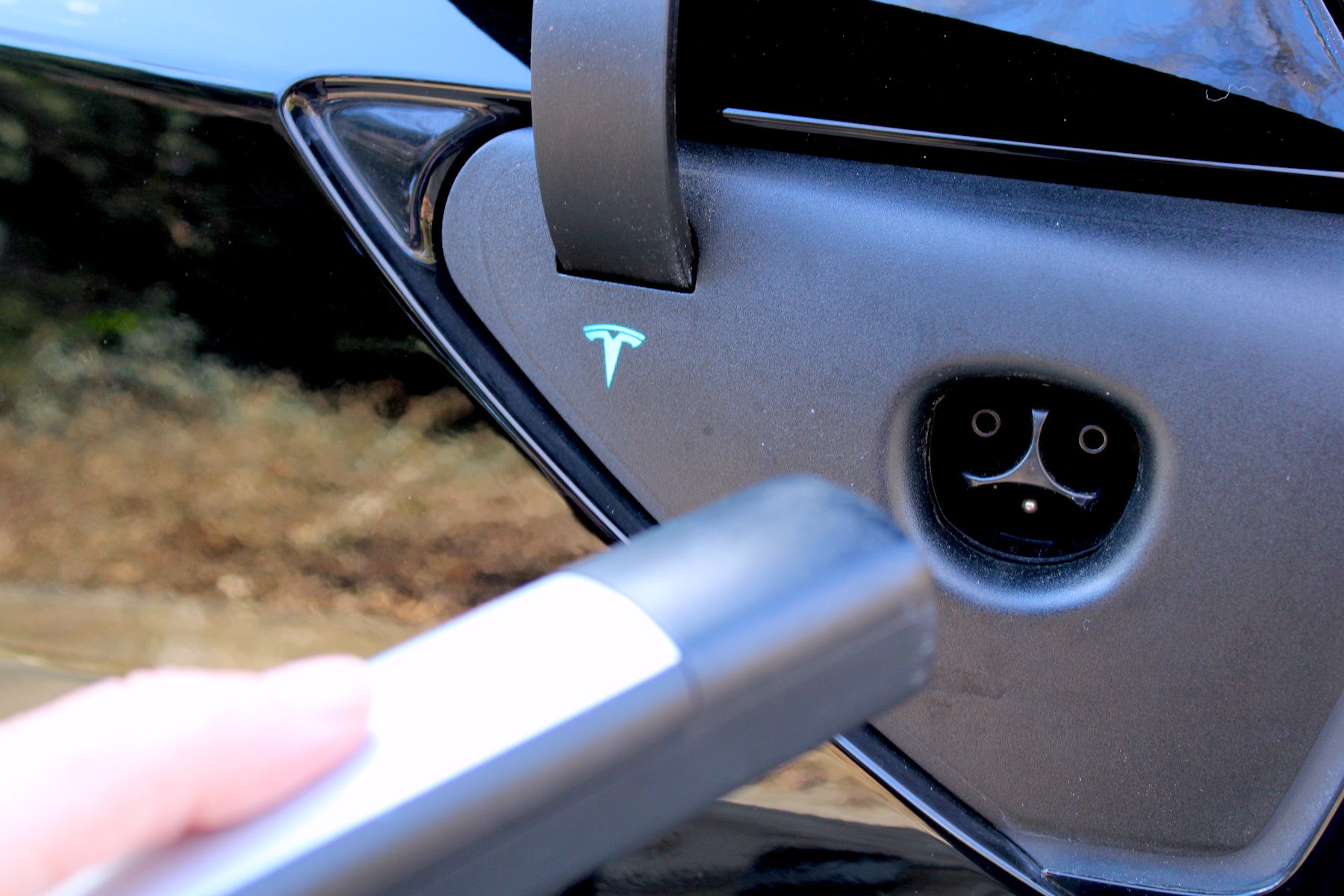
Tesla’s proprietary charging connector is unique to the company; although, as the automaker expands its reach around the world, it’s also adapting to existing standards. For example, Tesla’s Model Y in China will use a CCS connector, and a new CCS adapter will soon be available for Tesla’s Model 3 vehicles in Europe.
Developing charging connectors that support the implementation of ISO 15518 can be a real challenge for connector manufacturers because they don’t control all the pieces of the puzzle. For instance, EV charging networks are responsible for the integration of payment information.
A Brief Look at EV Charging Connectors
Despite the continued efforts of the ISO and IEC, there still isn’t a global standard for EV charging connectors. Dominant standards include IEC 62196 in Europe, SAE J1772 in the Americas and Japan, and GB/T 20234 in China, as well as Tesla’s proprietary connector. Although, the Combined Charging System (CCS) quick-charge connector interface is fast becoming the de facto choice in Europe for DC charging. In fact, Tesla is even adding a CCS charging option to its new Model 3 cars, giving drivers additional charging connector options and freeing them from relying on the adapters most American drivers carry to charge at stations outside of the Tesla network.
EV Charging Levels Explained
Level 1: 110–120V
This is the slowest charging option, used for residential charging systems. It uses 110V in the U.S. and generally produces 12–16 amps, charging at a rate of around five miles of range per hour (RPH). With the exception of Tesla, most Level 1 chargers use a standard SAE J1772 charging connector, are compatible with standard 120VAC household outlets, and take eight to 12 hours to fully charge a depleted battery.
Level 2: 208–240V
This level is typically found in retail parking lots and can be free or paid, depending on the location. Level 2 chargers typically run 16–40 amps and typically charge at a rate of around 30 miles of range per hour. Many EV owners buy and install a Level 2 charger at home to achieve a full charge faster, typically in four to six hours for a fully depleted battery. Level 2 chargers also use the SAE J1772 connector, so Tesla owners typically carry an adapter that allows them to use these public charging connectors.
Level 3: 200–600VDC
This is the fastest charging level currently available and requires charging connectors rated for 25–50kW. DC fast chargers support three types of connectors — CHAdeMO, CCS, and Tesla — and can typically charge a vehicle to 80% in roughly half an hour. Level 3 chargers are well equipped to provide EV owners with fast charging options for road trips, as well as convenient charging options for the many EV owners without suitable home charging options.
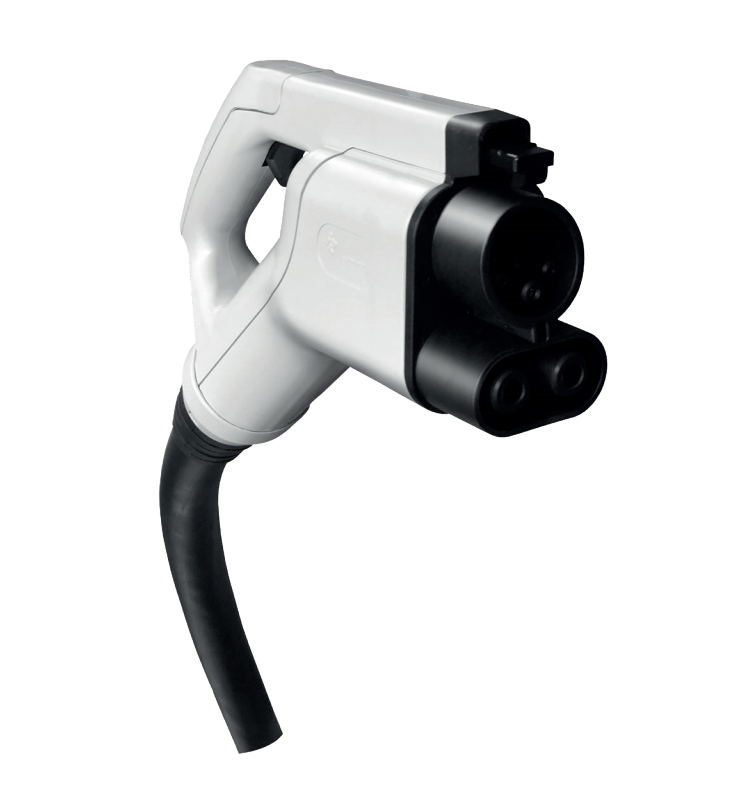
ITT Cannon’s DC Fast Charging CCS 1 connector uses a liquid cooling solution to manage the safe delivery of high-speed, high-voltage vehicle charging using an SAE J1772 interface.
Bradley Berman, a journalist who tracks the electric vehicle industry for global audiences, says that the security issues for EV charging connectors resembles those faced by Secure Sockets Layer (SSL) protocols in networked data transfers. In this analogy, the EV simply replaces an RFID card or mobile app. He says that disputes over how security certificates are exchanged between entities seems to be a roadblock for universal adoption of ISO 15118. “The stumbling block is not the technology employed for communications between the EV and charger,” he said in an SAE discussion. “The dispute is about how security certificates are exchanged between entities, including automakers, Chargepoint operators (CPOs) and so-called mobility operators (MOs).”
A working group addressing ISO 15118 continues to work towards a resolution for smart charging connectors and the protocols needed for more seamless transactions.
While working groups discuss ways to make smart charging connectors pass additional information to billing systems, connector manufacturers continue to improve the charging connectors themselves. In addition to working towards a common smart connector that can take contactless payments based on the car itself, connector manufacturers are continuously working to reduce the weight of EV charging connectors and cable assemblies.
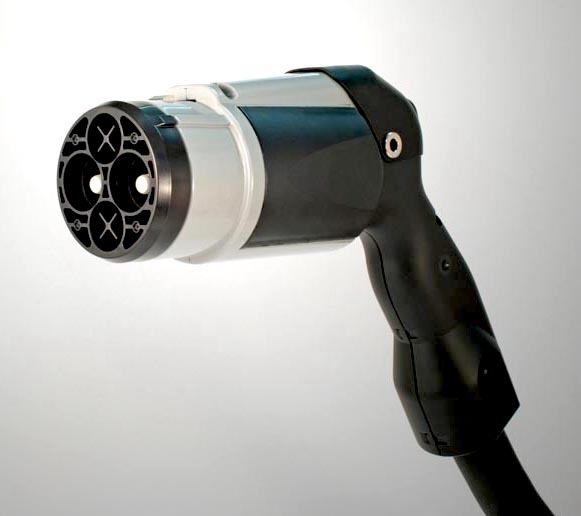
JAE’s KW1 Series (CE Certified Model) is an EV charging connector with an integrated cable. It is compatible with the CHAdeMO protocol charging system.
Levon Altunyan, product and marketing manager for JAE, says there is an increased call to make EV charging solutions as low-maintenance as possible across all the charging interfaces. Like most other connectivity puzzles, EV charging connectors must be extremely reliable and affordable. “Overqualified cables add unnecessary weight and cost, with more copper than is needed,” according to Altunyan. “Companies like JAE have developed cables that support lightweight and compact design goals for EV applications.”
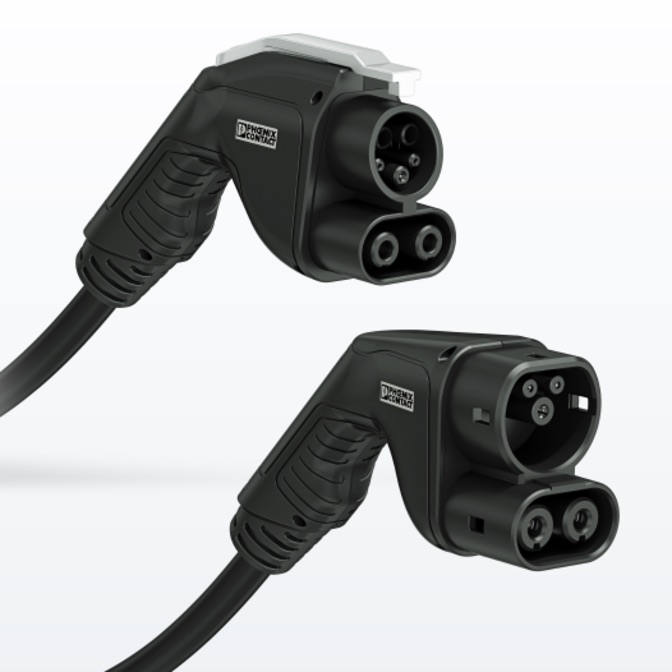
Phoenix Contact’s DC CCS charging cables support connectors used in lower-power home charging systems.
Phoenix Contact’s CHARX line of products covers the entire EV charging process, from charging cables and sockets to charging management software. Products are available for home charging systems as well as commercial and public infrastructure. In addition to the connectivity products, controllers, and software, the company expanded its EV portfolio in late 2020 with a range of new DC products for the European market, and a new EV inlet, which is now available in both Europe and North America.
As the decade continues to unfold, EV charging technologies will continue to evolve to provide drivers with fast, secure access to power.
Lisa Gardner writes about connectors and connectivity topics, working closely with engineers in the industrial, military, automotive, and medical fields to bring their stories to life.
Like this article? Check out our other articles covering EV and HEVs, and Standards, our Automotive Market Page and our 2020 and 2019 Article Archives.
- EV Charging Connectors are Key to Power and Security - January 12, 2021
